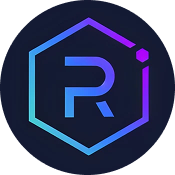In the vast universe of blockchain technology, Zilliqa and Axie Infinity stand out as two compelling examples of innovation—each catering to different needs within the crypto sphere. Zilliqa, with its pioneering sharding technology, aims at scalability and high throughput for decentralized applications, while Axie Infinity has popularized the play-to-earn gaming model through blockchain-based ownership and NFTs. Understanding their core architectures, use cases, and future prospects reveals how these platforms shape the evolving landscape of blockchain utility and gaming. This comparison dives deep into their technical foundations, strengths, and the audience they serve, providing crypto enthusiasts and investors with a detailed perspective on their potential and limitations.
Short on time? Jump to Zilliqa vs Axie Infinity Comparison
Understanding Zilliqa and Axie Infinity ?
Zilliqa, launched in 2017, is renowned for being the first blockchain to implement sharding technology, which divides the network into smaller, manageable parts called shards to improve scalability. Its unique architecture supports high transaction throughput, making it suitable for enterprise applications and decentralized finance (DeFi). Zilliqa employs its own smart contract language, Scilla, designed for security and formal verification, addressing vulnerabilities common in other blockchain platforms. Its ongoing development includes the integration of Ethereum Virtual Machine (EVM) compatibility, which aims to facilitate broader developer adoption and interoperability with existing Ethereum-based projects.
Axie Infinity is a blockchain-based game built on the Ronin sidechain, a derivative of Ethereum, emphasizing digital ownership through Non-Fungible Tokens (NFTs). It operates under a play-to-earn model where players collect, breed, and battle creatures called Axies, which are unique NFTs with verifiable ownership and rarity. The game's ecosystem relies heavily on its native tokens, AXS and SLP, which facilitate governance, staking, and in-game transactions. Despite impressive growth, Axie Infinity has faced challenges such as security breaches and token value volatility, prompting ongoing improvements to its infrastructure and security protocols.
Both platforms leverage blockchain technology to create innovative digital economies—Zilliqa through scalable, secure smart contracts suitable for decentralized applications, and Axie Infinity by enabling true ownership of digital assets within a gaming universe. Their technological approaches reflect distinct priorities: Zilliqa focuses on scalability and security for a wide range of blockchain use cases, while Axie Infinity emphasizes user engagement, digital ownership, and an integrated gaming economy. Understanding these foundational differences is critical when evaluating their roles within the broader crypto ecosystem.
As the blockchain space evolves, both Zilliqa and Axie Infinity are implementing significant upgrades—Zilliqa’s move towards full EVM compatibility to attract Ethereum developers, and Axie Infinity’s efforts to enhance security and scalability of its sidechain. These developments highlight their commitment to remaining competitive and innovative, shaping their futures in different yet interconnected ways.
Key Differences Between Zilliqa and Axie Infinity
Primary Use Case
- Zilliqa: Zilliqa is primarily designed as a high-performance blockchain platform aimed at decentralized applications, DeFi, and enterprise solutions. Its scalability and security features make it suitable for a broad spectrum of blockchain services requiring fast, secure transactions with low fees.
- Axie Infinity: Axie Infinity is centered around blockchain gaming, specifically enabling users to collect, breed, and battle digital creatures. Its ecosystem is built around NFTs and play-to-earn mechanics, catering to gamers and digital asset collectors seeking ownership and monetization opportunities.
Consensus Mechanism
- Zilliqa: Zilliqa employs a hybrid consensus mechanism combining Practical Byzantine Fault Tolerance (pBFT) with its sharding architecture, providing instant finality and high throughput. Its upcoming upgrades aim to incorporate faster consensus protocols to improve network efficiency.
- Axie Infinity: Axie Infinity’s Ronin sidechain uses a Proof of Authority (PoA) consensus with a limited set of validator nodes, prioritizing speed and efficiency for gaming transactions. However, this model has faced security challenges, prompting plans for network expansion and increased decentralization.
Smart Contract Language
- Zilliqa: Zilliqa’s smart contracts are written in Scilla, a language specifically designed for safety and formal verification, reducing vulnerabilities in complex contract logic. The platform is also working towards EVM compatibility, enabling Solidity-based smart contracts.
- Axie Infinity: Axie Infinity’s smart contracts are primarily deployed on the Ronin sidechain, which is compatible with Ethereum’s Solidity language. This allows developers to leverage familiar tools and frameworks for creating and managing NFTs and gameplay mechanics.
Scalability Solutions
- Zilliqa: Zilliqa’s signature feature is its sharding technology, which divides the network into multiple shards to process transactions in parallel. This allows the platform to scale linearly as more nodes join, supporting thousands of transactions per second.
- Axie Infinity: Axie Infinity’s scalability relies on the Ronin sidechain, which reduces congestion on the Ethereum mainnet. It employs a limited set of validators to achieve high transaction speeds and low fees, but faces ongoing challenges related to security and decentralization.
Security and Finality
- Zilliqa: Zilliqa enhances security through its use of pBFT, providing instant finality with every block, which is crucial for enterprise-grade applications and DeFi services. Its formal verification capabilities further bolster contract security.
- Axie Infinity: Axie Infinity’s security depends on the robustness of the Ronin sidechain’s validator network. Despite initial vulnerabilities leading to a major hack, the platform is actively expanding its validator set and implementing security improvements to protect user assets.
Zilliqa vs Axie Infinity Comparison
| Feature | ✅ Zilliqa | ✅ Axie Infinity |
|---|---|---|
| Main Focus | Scalable smart contract platform for decentralized apps and enterprise use. | Blockchain gaming ecosystem with NFT ownership and play-to-earn mechanics. |
| Consensus Algorithm | Hybrid pBFT with sharding for high throughput and instant finality. | Proof of Authority on the Ronin sidechain, optimized for speed in gaming. |
| Smart Contract Language | Scilla, designed for security and formal verification; EVM support upcoming. | Solidity, compatible with Ethereum, enabling easy development of NFTs and gameplay logic. |
| Scalability Method | Sharding technology allowing linear scalability as network grows. | Sidechain architecture with high-speed, low-fee transactions for gaming assets. |
| Security Model | Instant finality via pBFT and formal contract verification. | Validator-based PoA, with ongoing upgrades to improve decentralization and security. |
Ideal For
Choose Zilliqa: Developers and enterprises seeking a scalable, secure blockchain platform for decentralized applications and finance.
Choose Axie Infinity: Gamers, digital asset collectors, and developers interested in blockchain gaming and NFT ecosystems.
Conclusion: Zilliqa vs Axie Infinity
Zilliqa and Axie Infinity exemplify how blockchain technology can serve vastly different purposes—one pushing the boundaries of scalability and security for decentralized applications, the other pioneering the play-to-earn gaming economy through NFT integration. While Zilliqa’s architecture emphasizes high throughput, formal verification, and enterprise readiness, Axie Infinity’s success hinges on engaging users through blockchain gaming, digital ownership, and community-driven economies.
Choosing between these platforms depends on your specific needs: whether you prioritize building scalable DApps and financial services or immersing yourself in a vibrant gaming universe with true digital ownership. Both platforms are actively evolving—Zilliqa with its upcoming upgrades to improve efficiency and developer experience, and Axie Infinity with security enhancements and ecosystem expansion—highlighting their commitment to innovation. As blockchain technology matures, these projects will continue to shape the future of decentralized digital economies, each pushing the boundaries of what’s possible in their respective domains.






